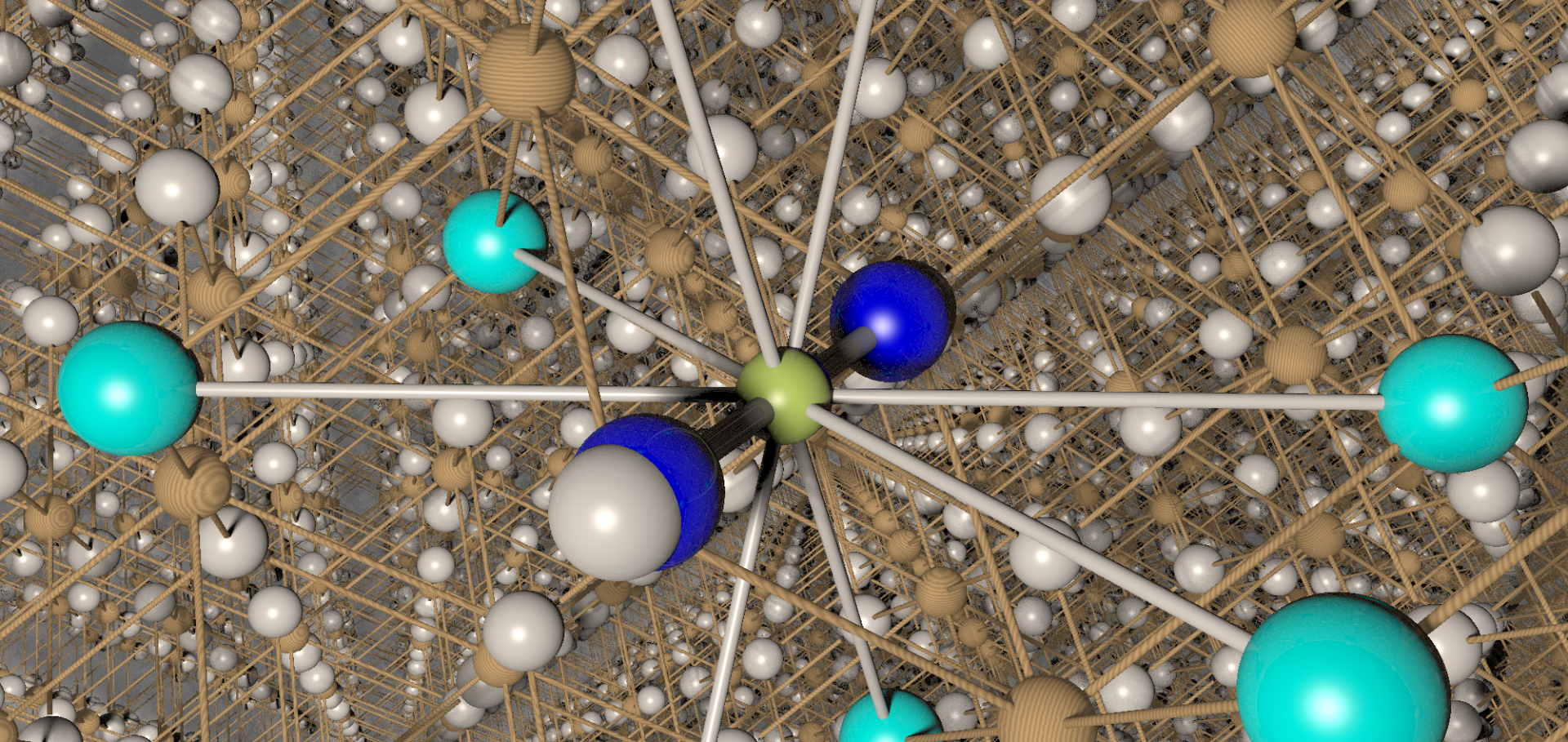μSR of conducting and non-conducting polymers
Physica B Condensed Matter 289-290 (2000) 625-630
Abstract:
μSR has been used to study a variety of polymers with very different electronic properties. In conducting polymers, the muon-generated radical states take the form of highly mobile polarons. Muon spin relaxation has been used to study the mobility of these polarons and to measure the temperature dependence of their intra-chain and inter-chain diffusion rates. It is found that the transport properties are strongly influenced by the librational ring modes of the phenylene rings in these polymers. In contrast, the muon-generated radical states in non-conducting polymers such as polybutadiene remain localized near the site of the muon. High field muon spin rotation, avoided level crossing resonance and longitudinal relaxation studies have been made, using the muon radical state as a probe of the dynamical properties of the polymer. Dramatic changes in the μSR signals are seen on going through the glass-rubber transition, as various dynamical degrees of freedom become frozen out. Additional information about the stability of the muon radical states on the microsecond timescale has also been obtained using RF muon spin rotation techniques. Using time-delayed RF resonance of the diamagnetic state at the RIKEN-RAL muon facility, the transition rate between paramagnetic and diamagnetic states could be studied as a function of temperature.Magnetotransport studies on the ruddlesden popper phases sr2 rmn2 o7 (r = nd, pr, ho, y) and sr2-x nd1+x mn2 o7 (x = 0, 0.1, 0.2, 0.5)
Journal of Physics Condensed Matter 11:46 (1999) 9053-9072
Abstract:
We study effects on magnetotransport produced by changing the size of the trivalent ions R3+ in the layered polycrystalline materials Sr2RMn2O7 (R = Pr, Nd, Ho, Y) and by varying the mixed-valence ratio Mn3+/Mn4+ in the series Sr2-xNd1+xMn2O7 (x = 0, 0.1, 0.2, 0.5). The results of our magnetic and electrical measurements are related to the measured structural characteristics of each compound. For the Sr2RMn2O7 series, colossal magnetoresistance (CMR) is observed below 150 K for R = Pr and R = Nd but not for samples containing R = Ho or R = Y ions, which have smaller ionic radii. For R = Ho and R = Y, the absence of CMR is correlated with the paramagnetic and insulating properties of the samples. Within the series Sr2-xNd1+xMn2O7, the CMR effect is also observed for temperatures below 150 K and increases as the temperature decreases. In this series the samples show a mixture of spin-glass and antiferromagnetic behaviour (x = 0, 0.1) or no long-range magnetic order (x = 0.2, 0.5). The largest CMR at high temperatures (above 100 K) and high magnetic fields (14 T) is observed for the x = 0.2 sample, which also shows the largest magnetization per formula unit. The observed CMR in the compounds studied here is attributed to magnetic cluster formation.Muon-spin-rotation studies of organic magnets
Chapter in Metal-Organic and Organic Molecular Magnets, Royal Society of Chemistry (RSC) (1999) 71-85
Angle dependence of the upper critical field in the layered organic superconductor κ-(BEDT-TTF)2 Cu(NCS)2 (BEDT-TTF ≡ bis(ethylene-dithio)tetrathiafulvalene)
Journal of Physics Condensed Matter 11:43 (1999)
Abstract:
We have performed detailed studies of the angle- and temperature-dependent resistive upper critical fields in the layered organic superconductor κ-(BEDT-TTF)2Cu(NCS)2. With the magnetic field lying in the conducting planes, our measurements show an upper critical field which comfortably exceeds the Pauli-paramagnetic limit in this material. We find no azimuthal angle dependence of the critical field, in spite of recent evidence that this material has gap nodes characteristic of d-wave superconductivity. We propose that the large critical fields may be due to a Fulde-Ferrell-Larkin-Ovchinnikov state which can exist in exactly in-plane fields because of the nature of the Fermi surface of κ-(BEDT-TTF)2Cu(NCS)2. © 1999 IOP Publishing Ltd.Stability of the vortex lattice in ET superconductors studied by μSR
Synthetic Metals 103:1-3 (1999) 1925-1928


